
|

|
|
Home Site Search Contact Us Subscribe
|
|
INSIGHT: Designing Landscapes to Adapt to Hurricane Season By focusing on cultivating native ecosystems, landscape architects can help to build landscapes that are both more resilient and more authentic to place. By Conners Ladner, PLA November 21, 2019 The Challenge
We are in the midst of what the National Hurricane Center has predicted to be an above-average storm season. Unfortunately, this appears to be the new standard. In the past two decades, the frequency of severe hurricanes has nearly doubled. In fact, Houston, Texas, has experienced 500-year floods for several years; just this past September, Tropical Storm Imelda caused massive flooding across the city. The country has experienced at least 25 such 500-year rain events since 2010, according to the National Weather Service. Hurricanes in Houston, like Hurricane Harvey in 2018, have had a dramatic impact on the culture and environment of the city. The effects of hurricanes are felt for years beyond the actual event, as landscapes are permanently damaged. Mitigating the effect of these extreme weather events challenges planners and designers to create more resilient landscapes.
Understanding Place
Located along Buffalo Bayou, the Houston Arboretum & Nature Center is a 155-acre regional resource that serves as a critical refuge for native plants and animals, and a hub for environmental education. In 2014, the Arboretum hired Design Workshop and a team of consultants to restore the landscape, which had become significantly disturbed due to large storm events and drought. A plan was developed that integrated the site’s cultural history with its native landscapes. The result is a flexible and resilient plan that meets modern environmental demands.
Through an analytical investigation, the design team identified that the site suffered from more than 50% large-canopy tree mortality. The team’s research of soils, topography, and drainage patterns revealed that the areas on-site with highest large-canopy tree morality rates (more than 70% mortality) occurred in locations more characteristic of coastal prairie landscapes, defined by the “pimple-dimple” geologic formations where micro-ecologies exist. Canopy trees growing in the “dimple” areas, where water collects, developed shallow and less extensive root systems and experienced the greatest canopy loss during the drought. Alternatively, canopy trees growing on the raised “pimples” developed deeper and more extensive root systems and survived the drought. Our analysis revealed the need to return portions of the Arboretum back to a pre-urbanized mosaic of coastal prairie, savannah, riparian, and woodland landscape types.
Implementation & Results
The design team recently completed implementation of the first phase of the master plan, addressing the north 65 acres of the site, as well as the highly cherished ravine landscape. More than 20 acres of new prairie/savanna ecologies have been reintegrated with 21.6 species per square meter documented in 2019. Along with providing habitat for a range of fauna and flora, this new ecosystem is adept at absorbing and filtering rainwater and bouncing back from flooding or drought. Rainfall is captured in two parking lots and carried to two large wetland ponds that have been designed to capture, clean, slow, and utilize storm water. These new water bodies help alleviate pressure further down the watershed for small- and medium-sized storm events.
The ravine area, considered by the public to be the most special part of the Arboretum, has recently opened after being intermittently closed for the past five years due to significant flooding. Working in partnership with landscape architects Reed | Hilderbrand, geomorphologist HydroGeo Design, and structural engineer Walter P. Moore, we set out to restore the historic riparian ecosystem in order to reset the natural landscape and allow it to better respond to the future impacts of climate changes. As a first step, the design team utilized natural stable channel design techniques to reshape the channel, slow water, and stabilize highly eroded slopes. A new trail system, including an expanded boardwalk system of fiberglass decking and two large bridges, allows guests the opportunity to re-engage with the natural topography of the ravine. All materials were selected and engineered to withstand large flood events.
As landscape architects, we can play an integral role in helping minimize the devastation of our landscapes through thoughtful design and planning. By focusing on cultivating native ecosystems we can help to build landscapes that are more resilient to the impacts of changing climate dynamics and more authentic to place.
Conners Ladner, PLA, is a professional landscape architect in the Austin office of Design Workshop. Through research, analysis, iteration, and innovation, he strives to formulate a creative design response to parallel the inherent beauty of nature in urban environments. Conners has planned and designed urban landscapes across the country, and is currently leading the process for the Downtown Quilt of Parks in Bentonville, Arkansas; the Wisner Tract Park in New Orleans, Louisiana, and the Houston Arboretum & Nature Center in Houston, Texas. He is currently pursuing a master’s degree in Human Dimensions of Organizations at the University of Texas at Austin, and is an honor graduate in Landscape Architecture from Louisiana State University.
|
(click on pictures to enlarge) 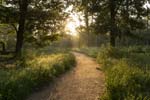 Design Workshop Improvements to the savannah landscape resulted in a diverse and resilient mosaic that is an authentic representation of the Houston Arboretum & Nature Center's regional ecological context. 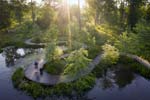 Design Workshop Pond Boardwalk: New storm water facilities capture storm water for detention, re-use, and habitat creation. 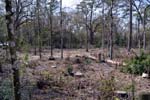 Design Workshop Pre-design implementation conditions: The Arboretum was highly disturbed due to drought and repeated flooding from large storm events. 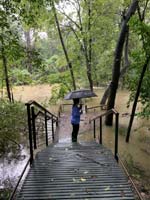 Houston Arboretum & Nature Center Tropical Storm Imelda brought historic rainfall to Texas in September 2019, inundating the ravine at the Arboretum. 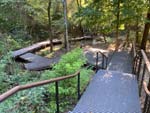 Design Workshop Post flood condition: Boardwalks and bridges in the ravine were designed to withstand flood damage.. |
© 2019 ArchNewsNow.com